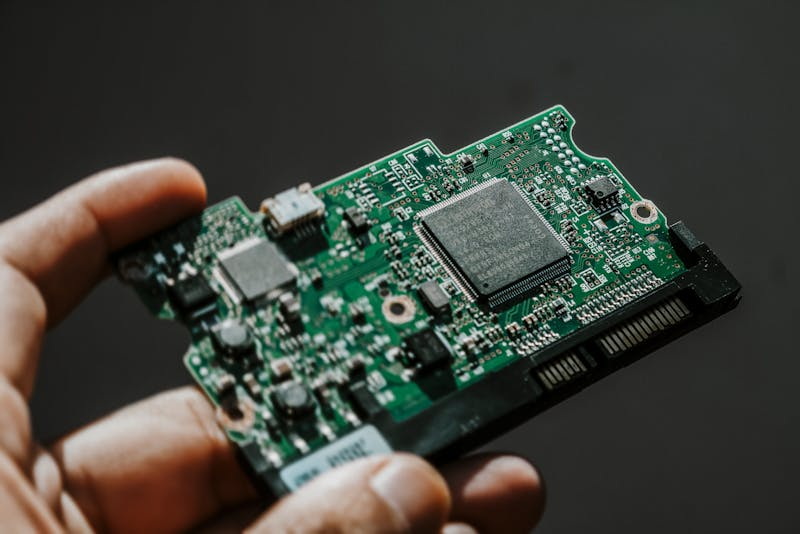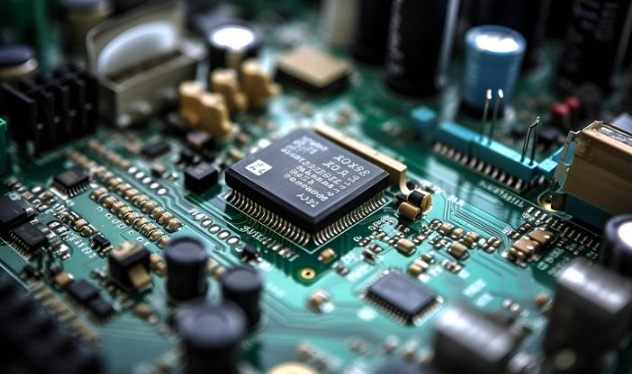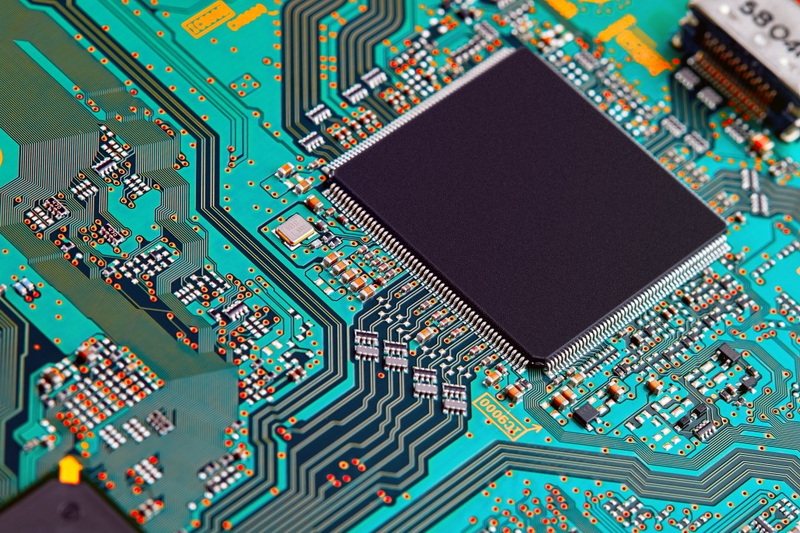Content Menu
● Understanding SMT Stencil Printing
>> What Is SMT Stencil Printing?
>> Role of SMT Stencil Printing Machine with Stencils
● Why Stencil Printing Is Essential for High-Quality SMT Assembly
>> Precision and Accuracy
>> Consistency and Repeatability
>> Efficiency and Speed
>> Cost-Effectiveness
>> Enabling Fine-Pitch and Miniaturized Components
● Types of SMT Stencils and Their Applications
>> Framed SMT Stencils
>> Frameless SMT Stencils
>> Step Stencils
● Materials and Manufacturing of SMT Stencils
>> Common Materials
>> Manufacturing Methods
● Key Factors Affecting Stencil Printing Quality
>> Stencil Flatness and Thickness Control
>> Aperture Design and Paste Release
>> Proper Maintenance and Cleaning
● Advantages of Using SMT Stencil Printing Machines with Stencils
● Conclusion
● FAQ
>> 1. What is an SMT stencil and why is it important?
>> 2. What materials are commonly used for SMT stencils?
>> 3. How does an SMT stencil printing machine work?
>> 4. What types of SMT stencils are available?
>> 5. How does stencil quality affect SMT assembly?
Surface Mount Technology (SMT) assembly is a cornerstone of modern electronics manufacturing, enabling the production of compact, efficient, and high-performance printed circuit boards (PCBs). Central to this process is the use of SMT stencil printing machines with stencils, which ensure the precise application of solder paste onto PCB pads. This article explores why stencil printing is indispensable for achieving high-quality SMT assembly, detailing the role of stencils, their types, materials, and the benefits they bring to PCB manufacturing.

Understanding SMT Stencil Printing
What Is SMT Stencil Printing?
SMT stencil printing is a process where solder paste is deposited onto the PCB pads through a thin metal stencil that acts as a mask. The stencil has apertures precisely cut to match the layout of the PCB pads where surface-mount devices (SMDs) will be placed. A solder paste-a mixture of powdered solder alloy and flux-is spread across the stencil using a squeegee, filling the apertures and transferring paste only to the designated areas on the PCB.
This process is critical because the quality and volume of solder paste deposited directly impact the reliability of solder joints, which are essential for the electrical and mechanical connection of components.
Role of SMT Stencil Printing Machine with Stencils
An SMT stencil printing machine automates this process, ensuring consistent alignment and uniform solder paste application. The machine precisely aligns the stencil over the PCB, controls the squeegee pressure and speed, and lifts the stencil cleanly to leave behind an accurate solder paste deposit. This automation is vital for high-volume production, where repeatability and precision are paramount.
Why Stencil Printing Is Essential for High-Quality SMT Assembly
Precision and Accuracy
The stencil ensures that solder paste is applied only to the exact locations of the PCB pads, with the correct volume. This precision prevents common defects such as solder bridging (where excess paste causes shorts between pads) and insufficient solder joints (which lead to weak connections). High-quality stencils with laser-cut apertures provide sharp, clean edges that facilitate excellent paste release, ensuring uniform deposits.
Precision in solder paste application is particularly critical as PCB designs become more complex with finer pitch components. The stencil acts as a physical template that guarantees the paste is deposited exactly where needed, avoiding misalignment that can cause component placement errors or soldering defects.
Consistency and Repeatability
Using stencils allows manufacturers to replicate the exact solder paste pattern across hundreds or thousands of PCBs. This consistency is crucial for maintaining product quality in mass production. The repeatability reduces variability caused by manual paste application methods, leading to fewer defects and higher yields.
Automated SMT stencil printing machines enhance this consistency by controlling variables such as squeegee speed, pressure, and stencil-to-board separation speed. These factors are critical to achieving uniform paste thickness and volume, which directly influence solder joint quality.
Efficiency and Speed
Stencil printing is a rapid process suitable for high-volume SMT assembly lines. The use of automated stencil printing machines accelerates production while maintaining quality. This efficiency reduces labor costs and shortens production cycles, enabling faster time-to-market for electronic products.
Compared to manual solder paste application methods, stencil printing machines can print multiple boards per minute with minimal operator intervention. This speed is essential for meeting the demands of consumer electronics, automotive, aerospace, and telecommunications industries, where production volumes are high and delivery deadlines tight.
Cost-Effectiveness
By controlling solder paste volume precisely, stencil printing reduces paste waste and minimizes the need for costly rework due to defects. The durability of high-quality stencils, especially those made from stainless steel, means they can be reused for many production cycles, spreading the cost over large production runs.
Furthermore, stencil printing reduces the risk of defects such as tombstoning, solder bridging, and insufficient wetting, which can lead to expensive repairs or scrapped boards. The improved first-pass yield lowers overall manufacturing costs and increases profitability.
Enabling Fine-Pitch and Miniaturized Components
As electronic devices become smaller and more complex, PCBs feature finer pitch components and smaller pads. Stencil printing with high-precision stencils is essential to deposit the correct paste volume on these tiny pads, which manual methods cannot reliably achieve. This capability supports the assembly of advanced electronics with high component density.
Fine-pitch components, such as 0201 resistors or BGA (Ball Grid Array) packages, require extremely precise solder paste deposits to avoid bridging or insufficient solder joints. Stencil printing machines equipped with high-quality stencils ensure these demanding requirements are met, enabling manufacturers to produce cutting-edge devices.

Types of SMT Stencils and Their Applications
Framed SMT Stencils
Framed stencils are stretched tightly within a rigid frame, offering excellent stability and positional accuracy. They are suited for high-volume production environments where consistent quality over many cycles is required. The frame helps maintain stencil flatness and tension, critical for repeatable printing results.
The frames are usually made from aluminum or stainless steel and come in standard sizes compatible with most SMT stencil printing machines. Framed stencils are easy to handle and install, reducing setup time and improving line efficiency.
Frameless SMT Stencils
Frameless stencils, also called foil stencils, are not mounted in a frame and are more flexible and cost-effective. They are ideal for prototyping and low-volume production where frequent stencil changes are necessary. Frameless stencils offer good quality but are less stable than framed types.
Because frameless stencils require manual tensioning or specialized holders, they are less common in high-volume production but provide an economical solution for R&D and small batch runs.
Step Stencils
Step stencils have varying thicknesses in different areas, allowing for optimized solder paste volumes tailored to components of different sizes on the same PCB. This design improves soldering quality for boards with mixed component types.
For example, larger components like connectors may require more solder paste, while fine-pitch ICs need thinner deposits to prevent bridging. Step stencils enable manufacturers to fine-tune paste volume without changing the stencil or printing process.
Materials and Manufacturing of SMT Stencils
Common Materials
- Stainless Steel: The most widely used material due to its durability, corrosion resistance, and thermal stability. It withstands repeated use without deformation and maintains aperture precision over time.
- Nickel Alloys: Used for high-temperature and high-strength applications, nickel stencils offer excellent mechanical properties for demanding environments.
- Other Materials: Brass and polymer composites are less common but used in specific cases where cost or flexibility is a priority.
Manufacturing Methods
- Laser Cutting: Provides precise, clean apertures with sharp edges, essential for accurate solder paste deposition. Laser cutting is the preferred method for most SMT stencils due to its repeatability and ability to produce complex aperture shapes.
- Chemical Etching: Allows for intricate aperture designs with smooth walls, used for fine-pitch and complex PCB layouts. Etched stencils may have slightly rounded aperture edges, which can affect paste release characteristics.
Key Factors Affecting Stencil Printing Quality
Stencil Flatness and Thickness Control
A flat stencil ensures proper contact with the PCB, preventing misalignment and paste smearing. Thickness control is critical because the stencil thickness determines the volume of solder paste deposited. Tight tolerances (e.g., ±1%) in thickness lead to consistent paste volumes and reliable solder joints.
Variations in stencil thickness can cause uneven paste deposits, resulting in poor solder joints or defects. Manufacturers often specify stencil thickness based on component size and paste volume requirements, with common thicknesses ranging from 75 to 150 microns.
Aperture Design and Paste Release
The shape and finish of stencil apertures affect how solder paste flows and releases onto the PCB pads. Smooth aperture walls and optimized aperture geometry prevent paste smearing and ensure clean deposits.
Some aperture designs include rounded corners or trapezoidal shapes to improve paste release and reduce the risk of solder bridging. Additionally, anti-wetting coatings on stencil surfaces can prevent solder paste from sticking inside apertures, enhancing print quality.
Proper Maintenance and Cleaning
Regular cleaning of stencils prevents clogging of apertures and maintains print quality. Solder paste residues can dry and block apertures, causing insufficient paste deposits or inconsistent printing.
Cleaning methods include ultrasonic cleaning, stencil cleaning machines, or manual wiping with appropriate solvents. Maintaining the stencil in good condition extends its life and ensures consistent SMT assembly quality.
Advantages of Using SMT Stencil Printing Machines with Stencils
- High precision and repeatability in solder paste application
- Reduced defects such as bridging, tombstoning, and insufficient solder joints
- Faster production throughput with automated alignment and printing
- Cost savings from reduced paste waste and rework
- Support for fine-pitch and complex PCB designs
- Enhanced product reliability and performance
The integration of SMT stencil printing machines with high-quality stencils is a critical factor in modern electronics manufacturing. These systems enable manufacturers to meet the stringent quality and productivity demands of today's competitive markets.
Conclusion
Stencil printing is an essential process for high-quality SMT assembly. The use of SMT stencil printing machines with stencils ensures precise, consistent, and efficient application of solder paste, which is critical for forming reliable solder joints on PCBs. High-quality stencils made from durable materials like stainless steel, combined with advanced manufacturing methods such as laser cutting, provide the accuracy and repeatability needed for modern electronics production. As PCB designs continue to evolve with finer pitches and higher component densities, stencil printing remains a foundational technology enabling the production of reliable, high-performance electronic devices.
By investing in quality stencils and automated printing equipment, manufacturers can significantly improve yield, reduce defects, and accelerate production timelines, ultimately delivering superior products to market faster and at lower cost.

FAQ
1. What is an SMT stencil and why is it important?
An SMT stencil is a thin metal sheet with apertures matching PCB pad layouts, used to apply solder paste precisely during SMT assembly. It is important because it ensures accurate solder paste deposition, reducing defects and improving solder joint reliability.
2. What materials are commonly used for SMT stencils?
The most common materials are stainless steel and nickel alloys due to their durability, corrosion resistance, and thermal stability. Stainless steel is preferred for most applications.
3. How does an SMT stencil printing machine work?
The machine aligns the stencil over the PCB, spreads solder paste using a squeegee across the stencil apertures, and lifts the stencil to leave solder paste deposits on the PCB pads. This automated process ensures precision and speed.
4. What types of SMT stencils are available?
There are framed stencils for high-volume production, frameless stencils for prototyping and low-volume runs, and step stencils with variable thickness for mixed component boards.
5. How does stencil quality affect SMT assembly?
Stencil flatness, thickness tolerance, aperture design, and surface finish directly impact solder paste volume and placement accuracy. Poor stencil quality can cause defects like bridging, insufficient solder, and increased rework costs.




















